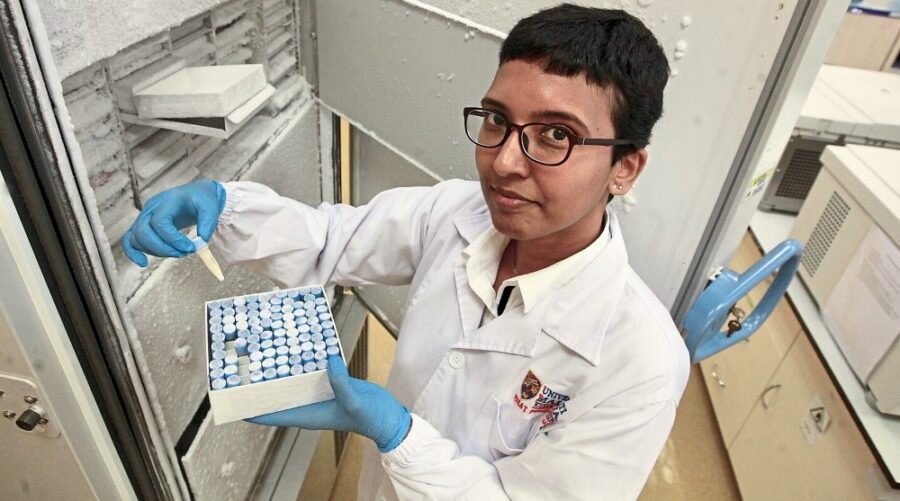Can Exposure to Different Infections Affect the HIV Reservoir?
amfAR grantee and TREAT Asia Investigator Dr. Reena Rajasuriar is working to shed light on how HIV reservoir size may differ in lower- vs. higher-income countries, which may point to a need for different cure strategies.
One of the roles of the CD4 T lymphocytes—the type of white blood cell targeted by HIV—is to remember pathogens that have previously infected the body. If the same pathogen tries to attack again, the CD4 cells reproduce quickly in order to mount a defense against the invading microorganism.
This defense mechanism may be a boon to the persistent HIV reservoir, the main obstacle to a cure for HIV. “When these cells expand because they are fighting off that particular infection, if those particular cells have HIV in them, it will likely expand as well, so your HIV reservoir becomes bigger,” says amfAR grantee and TREAT Asia Investigator Dr. Reena Rajasuriar of the University of Malaya in an article in The Star Malaysia. Since people living in low- and middle-income countries often encounter more pathogens compared with those in higher-income countries, a one-size-fits-all approach to curing HIV may not be effective for all populations.
Dr. Rajasuriar’s work is being partially funded through a grant from amfAR. She and her colleagues will compare the viral reservoir in Malaysian patients with patients in the U.S. to understand 1) if living in a low- or middle-income country has an impact on the size of the reservoir, 2) whether the size of the reservoir is related to the number of different types of previous infections someone has had, and 3) what happens with the viral reservoir with advancing age.
“Dr. Reena draws from her passion for HIV care in Asia and is adapting it to ask the important questions for the ultimate treatment—a cure,” says Dr. Marcella Flores, amfAR’s associate director of research. “Her work is part of the puzzle that amfAR is aiming to solve, to ensure that a cure for HIV will be effective in all people living with HIV.”

Share This:
